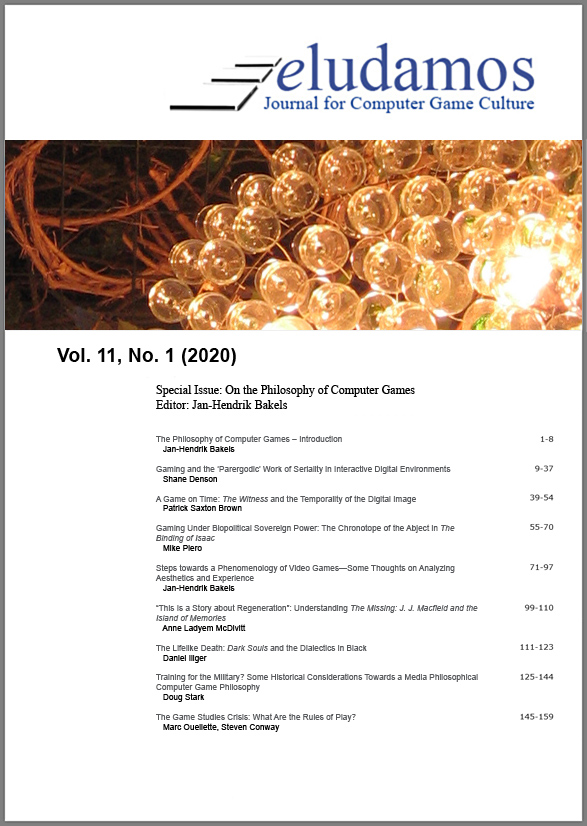A Game on Time: The Witness and the Temporality of the Digital Image
DOI:
https://doi.org/10.7557/23.6353Keywords:
games, phenomenology, temporality, the witness, jonathan blow, abbas kiarostami, andrei tarkovskyAbstract
This essay addresses the temporality of digital images through a reading of the 2016 puzzle game The Witness. Fusing Paul Ricoeur’s definition of narratives as “games with time” and Alexander Galloway’s description of the computer as “remediating the very conditions of being itself,” I describe The Witness as a game on time. The methodical pace it ties its player to, along with the environmental awareness it elicits, creates, rather than simply representing, relations of time that bespeak the accelerated, non-human temporality—the “protentions” (Yuk Hui)—of digital objects and environments. Taking the game’s embedding of a ten-minute sequence from director Andrei Tarkovsky’s film Nostalghia (1983) within its gameplay as a cue, I develop these ideas in relationship to both the phenomenology of time and the cinema of the “time image,” in particular the work of Abbas Kiarostami. For game designer Jonathan Blow, as for Kiarostami, the digital image is a fundamentally new form of temporal experience that requires new kinds of environmental awareness and care (Sorge).
Publication Facts
Reviewer profiles N/A
Author statements
Indexed in
-
—
- Academic society
- N/A
- Publisher
- Septentrio Academic Publishing








